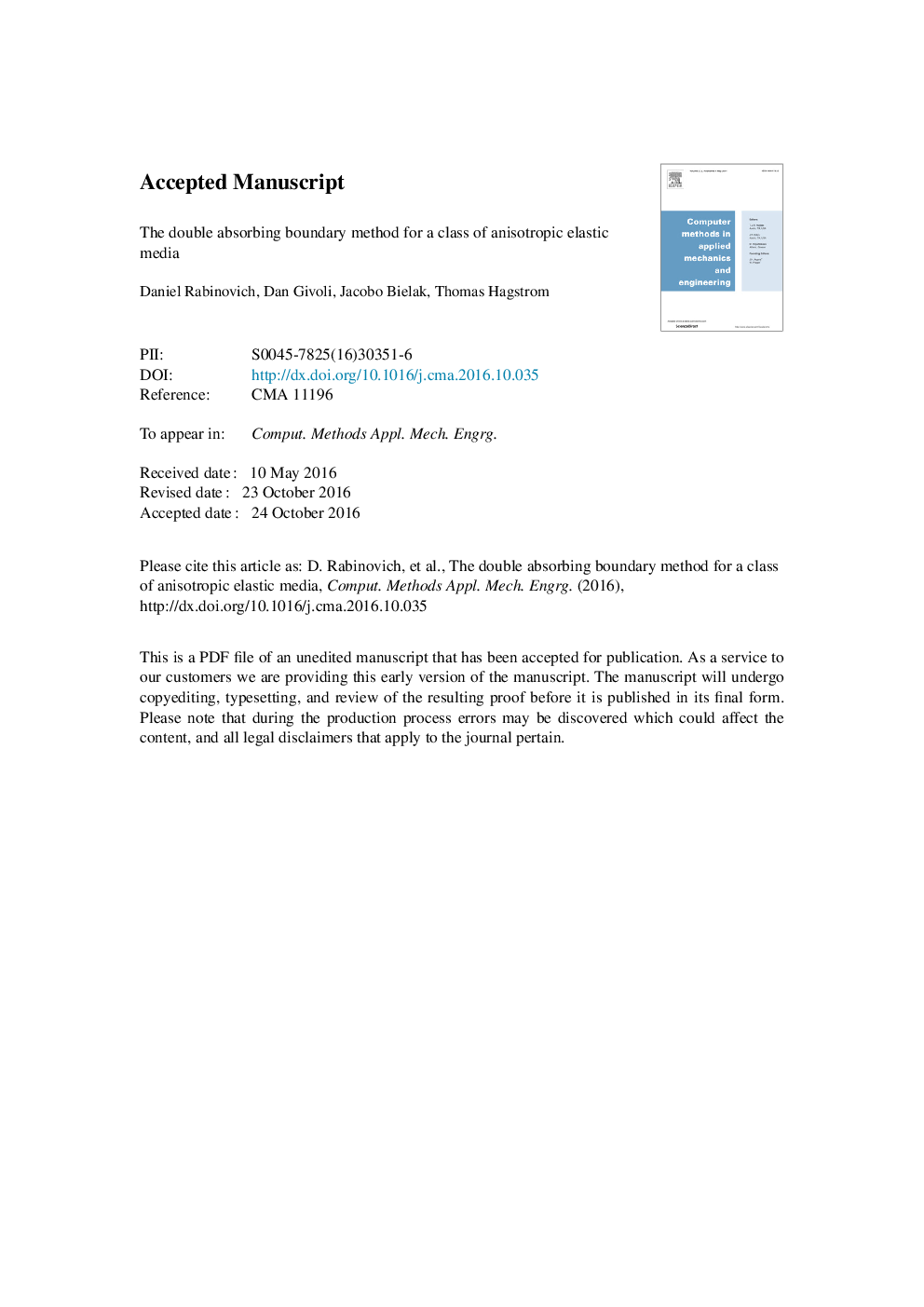| Article ID | Journal | Published Year | Pages | File Type |
|---|---|---|---|---|
| 4964156 | Computer Methods in Applied Mechanics and Engineering | 2017 | 48 Pages |
Abstract
The Double Absorbing Boundary (DAB) method was recently introduced as a new approach for solving wave problems in unbounded domains. It has common features to local high-order Absorbing Boundary Conditions (ABC) on one hand, and to Perfectly Matched Layers (PML) on the other, and has relative advantages with respect to both. In the DAB method, the unbounded domain is truncated to produce a finite computational domain, which is then enclosed by a thin layer, as in the PML. Local high-order ABC are then imposed on both the inner and outer boundaries of the layer. Auxiliary variables are defined on the two boundaries as well as inside the layer, and participate in the numerical scheme. Only low order derivatives appear in the formulation, which allows the use of standard discretization methods in space and time. In previous studies, the DAB was developed for acoustic waves which are solutions to the scalar wave equation, and for elastic waves in isotropic media. Here the approach is extended to time-dependent elastic waves in anisotropic media. The geometrical configuration assumed is that of a semi-infinite wave guide, truncated via the DAB layer. Standard Finite Elements (FE) are used for space discretization and the damped Newmark scheme is used for time discretization. The problems considered here are restricted to those with periodic lateral boundary conditions, and with anisotropic media which do not support inverse modes, since removing these limitations may lead to a numerical instability. The performance of the scheme is demonstrated via numerical examples, including uniform orthotropic and layered orthotropic media.
Keywords
Related Topics
Physical Sciences and Engineering
Computer Science
Computer Science Applications
Authors
Daniel Rabinovich, Dan Givoli, Jacobo Bielak, Thomas Hagstrom,
